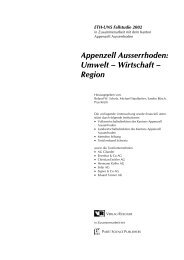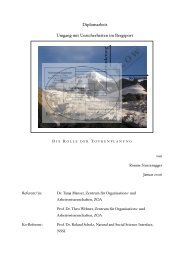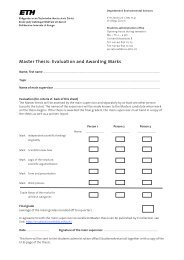The Paradigm of Human-Environment Systems - Natural and Social ...
The Paradigm of Human-Environment Systems - Natural and Social ...
The Paradigm of Human-Environment Systems - Natural and Social ...
You also want an ePaper? Increase the reach of your titles
YUMPU automatically turns print PDFs into web optimized ePapers that Google loves.
Rol<strong>and</strong> W. Scholz & Claudia Binder<br />
A multi-level hierarchy: Conceptualizing human systems<br />
<strong>Human</strong> systems can be conceptualized by using the hierarchy principle dating from time<br />
<strong>of</strong> Aristotle (Apostle, 1952; Patee, 1974; Simon, 1974; Silverstein, 2000): “… control or regulation<br />
mechanisms that produce stability are usually interpreted in terms <strong>of</strong> hierarchy, …” (Forman,<br />
1995, p. 505) A hierarchy <strong>of</strong> human systems can differ in range, degrees <strong>of</strong> differentiation <strong>and</strong><br />
perspectives. For HES analysis we depart from Miller’s (1978) seven hierarchical levels. At each<br />
hierarchy level specific human – environmental relationships <strong>and</strong> regulatory mechanisms are<br />
encountered. Figure 2 presents a hierarchy ranging from the cell level through the organ, individual,<br />
group, organization, <strong>and</strong> society levels with the final level being that <strong>of</strong> supranational or<br />
global systems. According to the hierarchy principle, each higher level includes the lower ones.<br />
In this paper we do not deal with the supranational level.<br />
Figure 2: Levels <strong>of</strong> hierarchy<br />
modified according to Miller (1978).<br />
8 April 2003

















